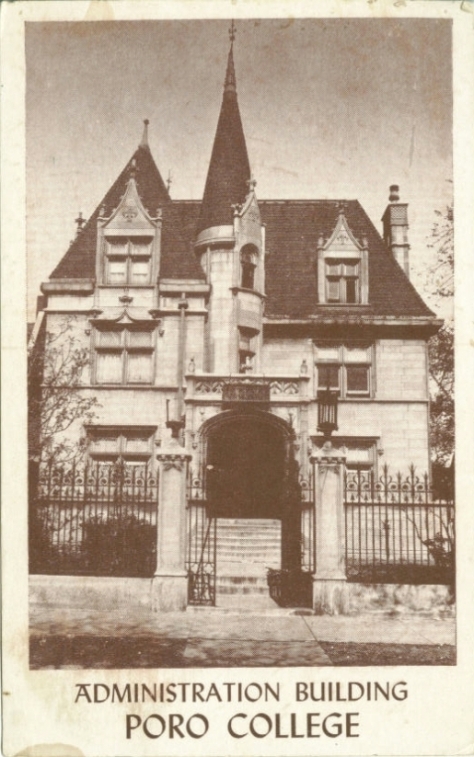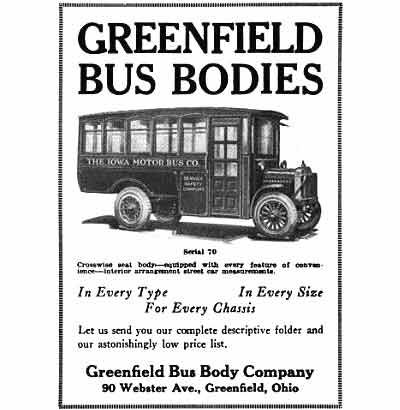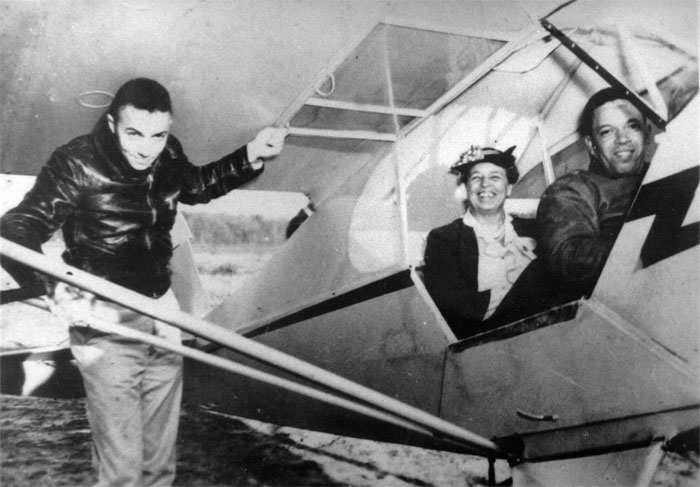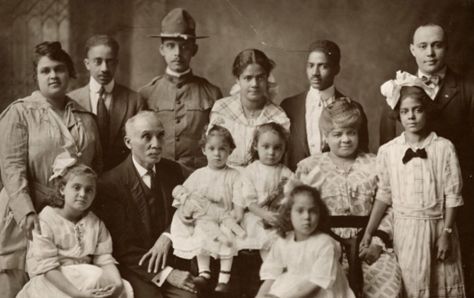Oscar Devereaux Micheaux (January 2, 1884 – March 25, 1951) was an African American author, film director and independent producer of more than 44 films. Although the short-lived Micheaux Book & Film Company produced some films, he is regarded as the first major African-American feature filmmaker, the most successful African-American filmmaker of the first half of the 20th century and the most prominent producer of race films.
Race films, mostly produced between 1915 and 1950 consisted of films produced for an all-black audience and featuring black casts. Micheaux produced both silent films and sound films when the industry changed to incorporate speaking actors.
Micheaux was born on a farm in Metropolis, Illinois on January 2, 1884. He was the fifth child born to Calvin S. and Belle Micheaux, who had a total of 13 children. In his later years, Micheaux added an “e” to his last name. His father was born a slave in Kentucky. Because of its surname, his father's family appears to have been associated with French-descended settlers. French Huguenot refugees had settled in Virginia in 1700; their descendants took slaves west when they migrated into Kentucky after the American Revolutionary War.
In his later years, Micheaux wrote about the social oppression he experienced as a young boy. To give their children education, his parents relocated to the city for better schooling. Micheaux attended a well-established school for several years before the family eventually ran into money troubles and were forced to relocate to the farm. Unhappy, Micheaux became rebellious and discontented. His struggles caused internal problems within his family. His father was not happy with him and sent him away to do marketing within the city. Micheaux found pleasure in this job because he was able to speak to many new people and learned many social skills that he would later reflect within his films.
When Micheaux was 17 years old, he moved to Chicago, Illinois to live with his older brother, then working as a waiter. Micheaux became dissatisfied with what he viewed as his brother’s way of living “the good life.” He rented his own place and found a job in the stockyards, which he found difficult. He worked many different jobs, moving from the stockyards to the steel mills.
After being “swindled out of two dollars” by an employment agency, Micheaux decided to become his own boss. His first business was a shoeshine stand, which he set up at a white suburban barbershop, away from Chicago competition. He learned the basic strategies of business and started to save money. He became a Pullman porter on the major railroads, at that time considered prestigious employment for African Americans because it was relatively stable, well-paid, and secure, and it enabled travel and interaction with new people. This job was an informal education for Micheaux. He profited financially, and also gained contacts and knowledge about the world through traveling as well as a greater understanding for business. When he left the position, he had seen much of the United States, had a couple of thousand dollars saved in his bank account, and had made a number of connections with wealthy white people who helped his future endeavors.
Micheaux moved to Dallas, South Dakota, where he bought land and worked as a homesteader. This experience inspired his first novels and films. His neighbors on the frontier were all white. "Some recall that [Micheaux] rarely sat at a table with his white neighbors." Micheaux’s years as a homesteader allowed him to learn more about human relations and farming. While farming, Micheaux wrote articles and submitted them to the press. The Chicago Defender published one of his earliest articles.

In South Dakota, Micheaux married Orlean McCracken. Her family proved to be complex and burdensome for Micheaux. Unhappy with their living arrangements, Orlean felt that Micheaux did not pay enough attention to her. She gave birth while he was away on business. She was reported to have emptied their bank accounts and fled. Orlean’s father sold Micheaux's property and took the money from the sale. After his return, Micheaux tried unsuccessfully to get Orlean and his property back.
Micheaux decided to concentrate on writing and, eventually, filmmaking, a new industry. He wrote seven novels. In 1913, 1,000 copies of his first book, The Conquest: The Story of a Negro Homesteader, were printed. He published the book anonymously, for unknown reasons. Based on his experiences as a homesteader and the failure of his first marriage, it was largely autobiographical. Although character names have been changed, the protagonist is named Oscar Devereaux. His theme was about African Americans realizing their potential and succeeding in areas where they had not felt they could.
The book outlines the difference between city lifestyles of Negroes and the life he decided to lead as a lone Negro out on the far West as a pioneer. He discusses the culture of doers who want to accomplish and those who see themselves as victims of injustice and hopelessness and who do not want to try to succeed, but instead like to pretend to be successful while living the city lifestyle in poverty.
He had become frustrated with getting members of his race to populate the frontier and make something of themselves, with real work and property investment. He wrote over 100 letters to fellow Negroes in the East beckoning them to come West, and only his older brother eventually came West. One of Micheaux's fundamental beliefs is that hard work and enterprise will make any person rise to respect and prominence no matter his or her race.
Micheaux’s first novel The Conquest was adapted to film and re-titled, The Homesteader. In 1918, his novel The Homesteader, dedicated to Booker T. Washington, attracted the attention of George Johnson, the manager of the Lincoln Motion Picture Company in Los Angeles. After Johnson offered to make The Homesteader into a new feature film, negotiations and paperwork became contentious between Micheaux and him. Micheaux wanted to be directly involved in the adaptation of his book as a movie, but Johnson resisted and never produced the film.

Instead, Micheaux founded the Micheaux Film & Book Company of Sioux City in Chicago; its first project was the production of The Homesteader as a feature film. Micheaux had a major career as a film producer and director: He produced over 40 films, which drew audiences throughout the U.S. as well as internationally.
This film, was met with critical and commercial success. It revolves around a man named Jean Baptiste, called the Homesteader, who falls in love with many white women but resists marrying one out of his loyalty to his race. Baptiste sacrifices love to be a key symbol for his fellow African Americans. He looks for love among his own people and marries an African-American woman. Relations between them deteriorate. Eventually, Baptiste is not allowed to see his wife. She kills her father for keeping them apart and commits suicide. Baptiste is accused of the crime, but is ultimately cleared. An old love helps him through his troubles. After he learns that she is a mulatto and thus part African, they marry. This film deals extensively with race relationships.
Micheaux contacted wealthy white connections from his earlier career as a porter, and sold stock for his company at $75 to $100 a share. Micheaux hired actors and actresses and decided to have the premiere in Chicago. The film and Micheaux received high praise from film critics. One article credited Micheaux with “a historic breakthrough, a creditable, dignified achievement”. Some members of the Chicago clergy criticized the film as libelous. The Homesteader became known as Micheaux’s breakout film; it helped him become widely known as a writer and a filmmaker.
In addition to writing and directing his own films, Micheaux also adapted the works of different writers for his silent pictures. Many of his films were open, blunt and thought-provoking regarding certain racial issues of that time. He once commented, “It is only by presenting those portions of the race portrayed in my pictures, in the light and background of their true state, that we can raise our people to greater heights”. Financial hardships during the Great Depression eventually made it impossible for Micheaux to keep producing films, and he returned to writing.
Micheaux’s second silent film was Within Our Gates, produced in 1920. Although sometimes considered his response to the film Birth of a Nation, Micheaux said that he created it independently as a response to the widespread social instability following World War I.
Within Our Gates revolved around the main character, Sylvia Landry, a mixed-race school teacher. In a flashback, Sylvia is shown growing up as the adopted daughter of a sharecropper. When her father confronts their white landlord over money, a fight ensues. The landlord is shot by another white man, but Sylvia's adoptive father is accused and lynched with her adoptive mother.
Sylvia is almost raped by the landowner’s brother but discovers that he is her biological father. Micheaux always depicts African Americans as being serious and reaching for higher education. Before the flashback scene, we see that Sylvia travels to Boston, seeking funding for her school, which serves black children. They are underserved by the segregated society. On her journey, she is hit by the car of a rich white woman. Learning about Landry's cause, the woman decides to give her school $50,000.
Within the film, Micheaux depicts educated and professional people in black society as light-skinned, representing the elite status of some of the mixed-race people who comprised the majority of African Americans free before the Civil War. Poor people are represented as dark-skinned and with more undiluted African ancestry. Mixed-race people also feature as some of the villains. The film is set within the Jim Crow era. It contrasted the experiences for African Americans who stayed in rural areas and others who had migrated to cities and become urbanized. Micheaux explored the suffering of African Americans in the present day, without explaining how the situation arose in history. Some feared that this film would cause even more unrest within society, and others believed it would open the public’s eyes to the unjust treatment by whites of blacks. Protests against the film continued until the day it was released. Because of its controversial status, the film was banned from some theaters.
Micheaux's 1925 Body and Soul starred Paul Robeson in his motion picture debut.
An escaped prisoner seeks refuge in the predominantly African-American town of Tatesville, Georgia, by passing himself off as the Rt. Reverend Isaiah T. Jenkins. He is joined in town by a fellow criminal, and the pair scheme to swindle the phony reverend's congregation of their offerings. Jenkins falls in love with a young member of his congregation, Isabelle Perkins, even though she is in love with a poor young man named Sylvester, who happens to be Jenkins’ long-estranged twin brother.
Jenkins steals money from Martha Jane, Isabelle's mother and convinces the young woman to take the blame for his crime. She flees to Atlanta and dies just as her mother locates her. Before dying, Isabelle reveals to her mother that Jenkins raped her and that he is the one who took her mother's money. She explains that she did not speak up before because she knew her mother would not believe her.
Returning to Tatesville, Martha Jane confronts Jenkins in front of the congregation. Jenkins flees and during a twilight struggle he kills a man who tries to bring him to justice. The following morning, Martha Jane awakens and realizes the episode with Jenkins was only a dream. She provides Isabelle (who is not dead) and Sylvester with the funds to start a married life together.
Micheaux adapted two works by Charles W. Chesnutt, which he released under their original titles: The Conjure Woman (1926) and The House Behind the Cedars (1927). The latter, which dealt with issues of mixed race and passing, created so much controversy when reviewed by the Film Board of Virginia that he was forced to make cuts to have it shown. He remade this story as a sound film in 1932, releasing it with the title Veiled Aristocrats. The silent version of the film is believed to have been lost.
Ten Minutes to Live is another 1932 Micheaux film. A movie producer offers a nightclub singer a role in his latest film, but all he really wants to do is bed her. She knows, but accepts anyway. Meanwhile, a patron at the club gets a note saying that she'll soon get another note, and that she will be killed ten minutes after that.
Micheaux's films were coined during a time of great change in the African-American community. His films featured contemporary black life. He dealt with racial relationships between blacks and whites, and the challenges for blacks when trying to achieve success in the larger society. Micheaux films were used to oppose and discuss the racial injustice that African Americans received. Topics such as lynching, job discrimination, rape, mob violence, and economic exploitation were depicted in his films. These films also reflect his ideologies and autobiographical experiences. The journalist Richard Gehr said, “Micheaux appears to have only one story to tell, his own, and he tells it repeatedly”.
Micheaux sought to create films that would counter white portrayals of African Americans, which tended to emphasize inferior stereotypes. He created complex characters of different classes. His films questioned the value system of both African American and white communities as well as caused problems with the press and state censors

The critic Lupack described Micheaux as pursuing moderation with his films and creating a “middle-class cinema”. His works were designed to appeal to both middle- and lower-class audiences.
Micheaux said,
“My results…might have been narrow at times, due perhaps to certain limited situations, which I endeavored to portray, but in those limited situations, the truth was the predominate characteristic. It is only by presenting those portions of the race portrayed in my pictures, in the light and background of their true state, that we can raise our people to greater heights. I am too imbued with the spirit of Booker T. Washington to engraft false virtues upon ourselves, to make ourselves that which we are not.”
Micheaux died on March 25, 1951, in Charlotte, North Carolina, of heart failure. He is buried in Great Bend Cemetery in Great Bend, Kansas, the home of his youth. His gravestone reads: "A man ahead of his time".
List of Oscar Micheaux Films
The Homesteader (1919)
Within Our Gates (1920)
The Brute (1920)
The Symbol of the Unconquered (1920)
The Gunsaulus Mystery (1921)
The Dungeon (1922)
The Hypocrite (1922)
Uncle Jasper's Will (1922)
The Virgin of the Seminole (1922)
Deceit (1923)
Thirty Years Later (1928)
When Men Betray (1929)
Wages of Sin (1929)
Easy Street (1930)
A Daughter of the Congo (1930)
Darktown Revue (1931)
The Exile (1931)
Veiled Aristocrats (1932)
Ten Minutes to Live (1932)
Black Magic (1932)
The Girl From Chicago (1932)
Ten Minutes to Kill (1933)
Phantom of Kenwood (1933)
Harlem After Midnight (1934)
Murder in Harlem (1935)
Temptation (1936)
Underworld (1937)
God's Step Children (1938)
Swing! (1938)
Lying Lips (1939)
Birthright (1939)
The Notorious Elinor Lee (1940)
The Betrayal (1948)
Birthright (1924)
A Son of Satan (1924)
Body and Soul (1925)
Marcus Garland (1925)
The Conjure Woman (1926), adapted from novel by Charles W. Chesnutt
The Devil's Disciple (1926)
The Spider's Web (1926)
The Millionaire (1927)
The Broken Violin (1928)
The House Behind the Cedars (1927), adapted from novel by Charles W. Chesnutt
Part of the Court.rchp.com 2017 Black History Month Series
Much of the article text republished under license from Wikipedia






















































